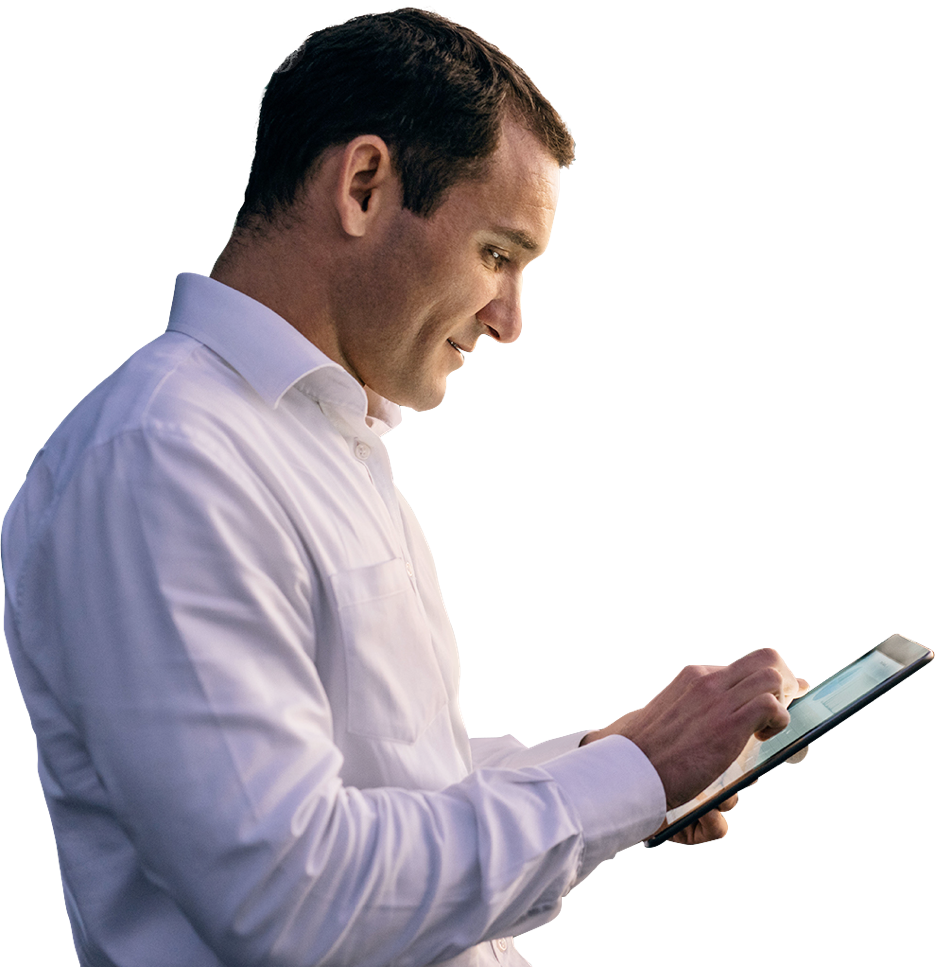Connectivity is a vital pillar of our strategy. As the demand grows for greater quantities of data and higher speeds of transmission, investing in the right spread of technologies and maintaining and upgrading our network infrastructure helps to ensure that Orange can continue to attract customers with the promise of fast and reliable services. In 2020 we continued to concentrate our efforts on fibre technology to keep pace with the demand for high-speed broadband, and we improved the quality of our mobile 4G/LTE network to accommodate the explosive growth of mobile data traffic. Due to the auction annulment, we have decided to implement Dynamic Spectrum Sharing (DSS) in the 2100 MHz band, which allows dynamic allocation of spectrum resources to 4G or 5G as required. Consequently, as from July 1, 2020 Orange Polska is offering commercial 5G services via a network of 1,600 base stations located in 370 cities and towns in Poland, to the largest extent in Warsaw, Łódź, Cracow and the Upper Silesian conurbation. In January 2021 we also enabled 5G DSS access in Tri-city.
A fast, modern and reliable network is a critical factor to success in convergence. Due to great differences in the competitive environment, the technological options related to population density, our market shares and customer needs, we use a local approach in our activities, which varies in big cities, medium to small towns and rural areas. In big cities we focus on development of fibre coverage and recovery of market share in fixed broadband by capitalising on our excellent position in the mobile market. In rural areas, mobile technologies, supplemented by fixed ones, are the primary broadband access solution.
We extend the fibre coverage not only by building completely new networks, but also using our previously built network, on which we launch additional fibre coverage for neighbouring households with low effort (coverage density increase), which previously were not covered by fibre access. Such action allows us to better manage our existing resources, improve financial results and increase customer satisfaction.
We focus also on maintaining infrastructure (poles, sewerage) that guarantees stability and quality for the medium (physical cables) and fixed Internet technology.
We focus our activities on further development the fibre network, while reducing our effort to expand the copper network.
We use possible channels of contacts with customers and our subcontractors to improve the quality of provided services, which is reflected in NPS results compared to other operators.
We implement modern technologies to monitor orders by customers, contact our service technicians (using a mobile application) and base our activities on modern BI/data solutions.
Anticipating ‘the new normal’ after the COVID-19 pandemic, we have been developing new technical possibilities for our customers, giving them the chance to use our services and fix the problems in the self-service mode (or with the remote support of our advisors) – which meets the customers’ demands and is the part of our Orange.one strategy.
In line with our strategy, we continued massive development of fibre lines. As at the end of 2020, almost five million households and companies were connectable with the fibre network, which is an increase of nearly 0.8 million compared to the end of 2019. Our fibre services are available in 154 cities compared to 142 cities at the end of 2019. In 2020, we continued to develop our network in smaller towns, where some districts are dominated by single-family houses. These accounted for 32% of the total network rollout. On one hand, it involves much higher investments, but on the other hand, we expect much higher demand for our services in single-family houses – despite the fact that fibre broadband is more expensive for such customers. This was also possible thanks to co-operation with third parties. It gives us access to places where building our own network would be economically unprofitable.
Our fibre development strategy assumes wholesale agreements with other fibre network operators, wherever it is technically possible and economically viable. The main benefits include quicker access to the fibre network and more efficient use of the existing fibre infrastructure in the relevant locations. This is in line with the aims of the Cost Directive of the European Commission, which recommends avoiding duplication of the existing facilities. The first agreement with the local operator we signed in 2015 as the first in Poland. In 2021 and later years we intend to continue acquiring FTTH coverage from other operators. Under this scheme, we have already been using the infrastructure of 42 operators (wholesale and retail), which accounts for 20% of the total coverage of Orange Polska.
Co-operation with Orange in the service lease models is widely appreciated on the FTTH operators market. It brings benefits on both sides in a win-win approach.
Orange Polska’s coverage could be extended through acquisitions of any FTTH existing infrastructure from third-party operators. Orange Polska is not, as a matter of principle, excluding participation in the consolidation process on the Polish telecom market, if such approach is economically justified.
Orange Polska is Poland’s largest wholesale service provider. The demand for transmission band is growing especially for 1 and 10 Gbps links. To meet these needs we continued to build nationwide OTN (Optical Transport Network) trunk lines in order to enhance accessibility and reduce time to deliver leased lines services. In 2020, we increased the number of OTN transport nodes, thus expanding the aggregate network capacity from 4.6 Tbps at the end of 2019 to 7.0 Tbps at the end of 2020.



